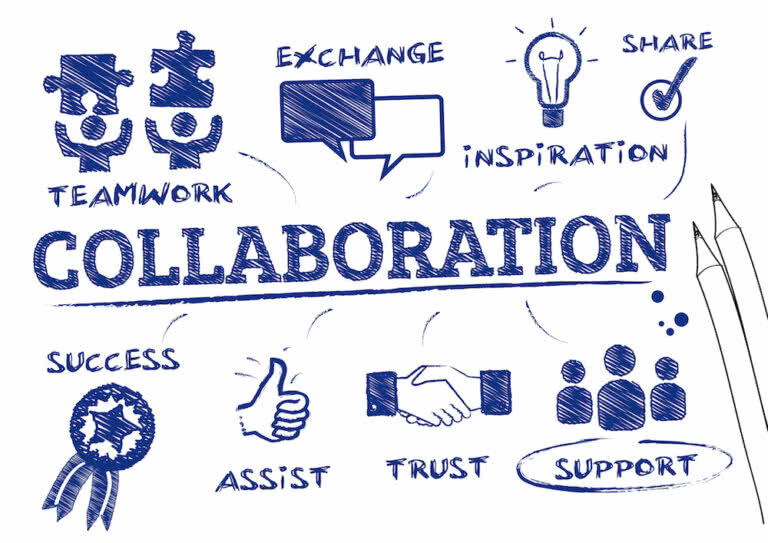Understand the Top 5 Principles of Operating Models !

Organizational leaders frequently have compelling aspirational ideas that inspire staff, and staff frequently have well-organized work procedures that work because they are subject-matter experts and are familiar with the details.
Companies are clear about their goals. They aspire to be more effective, swifter, and agile. They desire to provide wonderful client experiences, save costs by utilizing new technology, raise standards of quality and transparency, and create value.
However, we frequently observe that the true vision never materializes because staff members need help to relate to the plan helpfully. Because they are detached from a larger context, processes never become more efficient. As a result, businesses could not reach their full potential.
Examples include:
-
Programs that only produce short-term benefits and need to be more sustainable.
-
One-off initiatives in different departments that don't have a significant enterprise-wide impact.
-
Improvement techniques that are adopted but rarely used.
According to our observations at GrowthJockey, a clearly defined and articulated operating model for business is the link between strategy and day-to-day operations that directs the team, gives context and encourages behaviors that will help the strategy and vision be realized.
Now that the pandemic has passed, businesses re-evaluate how they conduct business and take action to become stronger. Growth Jockey can help you switch to next-generation operating models that are most compatible with the new normal, if you are also thinking about redesigning your operating model in the new year.
If you want to know more about operating models and the top five principles of operating models and the necessary shifts in detail, then we hve the precise insights for you !
1. Sales and Channels: Shift in POS

Point of sale is referred to as POS in business. It is about where and when a transaction takes place. This can also refer to internet shopping carts and checkouts, so it's not simply about cash registers.
Customers are more likely to use mobile wallets and credit cards than cash while making purchases. According to Finance Magnates, 75% of all transactions will be cashless by 2025.
Transactions on devices via QR codes from payment services like PayPal and payments made using a smartphone or tablet equipped with a card reader are also acceptable. Additionally, sales tax is often calculated and charged at the place of transaction.
Point-of-sale (POS) systems are improving, giving businesses more flexibility, control, and intelligence than ever.
Businesses can transition from many significant points of sale (POS) to a smaller number of tiny, automated POS and promote digital channels to respond to changing consumer purchasing habits. Before the epidemic, many businesses made this change, while others are just beginning to consider it.
GrowthJockey helps businesses adapt themselves to this change. We allow them to switch from conventional cash registers and fixed credit card readers to tablet and cloud-based POS solutions. With the advancement of technology, we help companies access new capabilities and the ability to centralize all data and transactions.
An excellent example of this tendency is provided by Amazon, whose Amazon Go physical storefronts offer distinctively avant-garde consumer experiences. The only time a phone is necessary is when a customer at Amazon Go scans an app on their phone when they enter the store. The products are automatically added to the basket, and when customers leave the store, the amount gets debited from their Amazon account.
Customers appreciate the convenience of this strategy, which also meets their demand for less contact with store employees.
2. Simple Product Design

Marketers view today's consumers as web-savvy, mobile-enabled data sifters who seize the opportunity to buy from whichever company or retailer is offering the most incredible bargain.
The belief is that consumer brand loyalty is dwindling. As a result, businesses have intensified their principles of operating in the belief that the more contact and information they offer, the higher the likelihood they would be able to retain these from more distracted and disloyal clients.
But for many customers, the increase in marketing communications is overwhelming rather than empowering. With persistent and misguided attempts to engage, marketers push customers away rather than bring them into the fold.
Simplifying items to promote digital and remote sales is one method of responding to changing client demands. Products that have been simplified are better suited for the new normal since they sell better through digital channels.
GrowthJockey helps you create a simple design for your product and provides your company with a healthy mix of all the different marketing techniques. We can assist you in connecting with a large customer base on social media or online to produce better leads and add more customization to your consumer outreach. This will, in turn, drive your company's digital sales.
3. Making the Move to Digital Remote Service

The field services generally provided on-site at customer mills and plants are taking on an entirely new dimension because of digitalization. Field services are becoming quicker, more affordable, and more user-friendly because of these new digital technologies, remote connections, and online assistance from a global expert network.
Organizations can modify their service and support to adapt to the shifting behaviors of their customers and staff. For instance, the Singapore-based bank DBS provides customer service through kiosks and virtual teller machines rather than actual offices.
A recent McKinsey Global Survey of executives found that their organizations have increased the digitalization of their internal processes and supply-chain connections by three to four years. Additionally, their portfolios' proportion of digital or digitally enabled products has increased startlingly by seven years.
GrowthJockey assists your business to advance technologically. Our cutting-edge remote connections and equipment allow us to provide maintenance services like troubleshooting and examinations, pre-audits, or just extra assistance with daily operations as needed. We provide clients quick, convenient, and easy access to first-rate customer support using these technologies.
4. Flexible Workforce

Workplace organizational strategies like job flexibility are evolving and may impact employee well-being. Working from home, taking time off when necessary, and altering one's work schedule are common forms of work flexibility.
Data from the General Social Survey—Quality of Worklife (GSS-QWL) from 2002 to 2018 show that working from home boosted job satisfaction and workplace stress by a combined 65% and 22%.
Taking time off increased the likelihood of job satisfaction by more than twofold while reducing the possibility of job stress by 56% and days with activity constraints by 24%. Scheduling a change resulted in a 20% reduction in job stress and a 62% improvement in job satisfaction.
By switching from a stable workforce paradigm to a more flexible one, businesses may respond to the evolving needs of their workforce. Flexible work hours and arrangements are a highly essential factor when choosing a job, according to one-third (31%) of LinkedIn users. If your organization doesn't offer flexibility, many prospects might decline an offer.
Dell is among the best examples of a company embracing flexibility. To provide a support system for all employees, Dell formalized its flexibility policy, which resulted in annual savings of $12 million.
Dell took this action after understanding how highly its employees appreciated the flexibility.
5. Collaborative Partnerships

By switching to more flexible and cooperative partnerships—which can take many different forms—organizations can react to the changing preferences of their vendors and partners.
Every partnership is based on the idea of finding benefits for both sides. The same holds for commercial partnerships. Your supplier and you both want to benefit from your collaborative principles, and the simplest way to do that is to collaborate successfully.
Supply chains may benefit significantly from closer ties between buyers and suppliers and increased resilience. Businesses with sophisticated procurement departments know that focusing solely on the cost of the goods and services they purchase has its limits.
These companies are aware that when suppliers and customers are willing and able to work together, they frequently discover new and significant sources of value that are mutually beneficial.
For example, buyers and suppliers can work together to develop innovative new products that will boost both parties' sales and profits. They can decide to use a coordinated approach to supply-chain optimization, restructuring their processes collaboratively to reduce waste and duplication of effort, or cooperating in purchasing raw materials. Alternately, they can work together to predict, plan, and manage capacity, enhancing service levels, reducing risks, and fortifying the integrated supply chain.
The collaboration between Jio and WhatsApp is one of the best instances of cooperation where both parties gain from their mutual knowledge. JioMart, the Jio Platforms' small business initiative, and WhatsApp, a social media platform owned by Facebook, recently redefined how the telecommunications firm may generate value from it.
To Sum Up
There can be no isolated efforts in transformation. The integrated usage of techniques and capabilities, along with operational improvement efforts centered on internal and external customer journeys, give the next-generation operating model its full impact.
Organizations are already adapting to these trends to keep up with them, whether it be by switching to digital products that are radically simplified or by establishing remote office operations. The changes will have an impact on customers, employees, vendors, and partners in a variety of ways. To adapt their operating models in 2023 to the expectations of the new normal for all stakeholders, businesses may need to develop a strong strategy.
At GrowthJockey, our staff has extensive knowledge of creating and implementing operational models in various intricate sectors. We can assist you with communicating your plan, expressing your situation, and bringing everything to life through the effective implementation of the principles for the operating model of your company.
We collaborate with clients to determine the why and the strategy that motivates the business and directs the elements of operating model.
Each company is distinct and has its own requirements. As part of a unique operating strategy, GrowthJockey tries to comprehend your situation and ascertain your requirements.
We also realize that an operational model's development and implementation might take a lot of work. You can lessen your workload by utilizing our extensive experience and tried-and-true technique for managing projects and creating and executing operating models in 2023.
Through a collaborative process, we can assist you in discovering and expressing your condition and in documenting it in a way that is engaging, useful, and simple to comprehend.
At GrowthJockey, we are fully committed to developing customised operating models that effectively address the critical challenges faced by our clients across various industries. Irrespective of your company's size, whether it's a small-scale enterprise or a large corporation, you can now benefit from our tailored solutions.
Get in touch with us today to scale your business by attaining perfection in your operating model !








